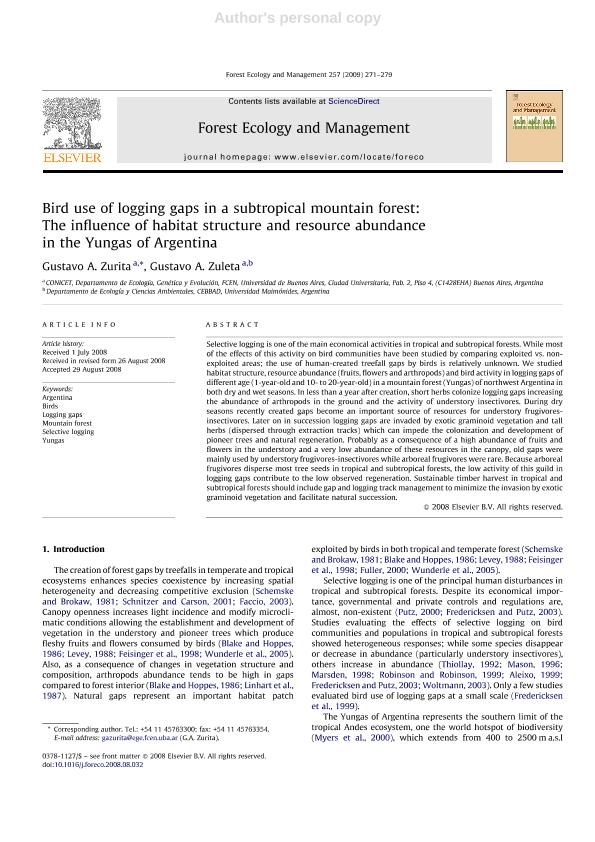Artículo
Bird use of logging gaps in a subtropical mountain forest: The influence of habitat structure and resource abundance in the Yungas of Argentina
Fecha de publicación:
01/2009
Editorial:
Elsevier Science
Revista:
Forest Ecology and Management
ISSN:
0378-1127
Idioma:
Inglés
Tipo de recurso:
Artículo publicado
Clasificación temática:
Resumen
Selective logging is one of the main economical activities in tropical and subtropical forests. While most of the effects of this activity on bird communities have been studied by comparing exploited vs. non-exploited areas; the use of human-created treefall gaps by birds is relatively unknown. We studied habitat structure, resource abundance (fruits, flowers and arthropods) and bird activity in logging gaps of different age (1-year-old and 10- to 20-year-old) in a mountain forest (Yungas) of northwest Argentina in both dry and wet seasons. In less than a year after creation, short herbs colonize logging gaps increasing the abundance of arthropods in the ground and the activity of understory insectivores. During dry seasons recently created gaps become an important source of resources for understory frugivores-insectivores. Later on in succession logging gaps are invaded by exotic graminoid vegetation and tall herbs (dispersed through extraction tracks) which can impede the colonization and development of pioneer trees and natural regeneration. Probably as a consequence of a high abundance of fruits and flowers in the understory and a very low abundance of these resources in the canopy, old gaps were mainly used by understory frugivores-insectivores while arboreal frugivores were rare. Because arboreal frugivores disperse most tree seeds in tropical and subtropical forests, the low activity of this guild in logging gaps contribute to the low observed regeneration. Sustainable timber harvest in tropical and subtropical forests should include gap and logging track management to minimize the invasion by exotic graminoid vegetation and facilitate natural succession. © 2008 Elsevier B.V. All rights reserved.
Palabras clave:
Argentina
,
Birds
,
Logging Gaps
,
Mountain Forest
,
Selective Logging
,
Yungas
Archivos asociados
Licencia
Identificadores
Colecciones
Articulos(CCT - NORDESTE)
Articulos de CTRO.CIENTIFICO TECNOL.CONICET - NORDESTE
Articulos de CTRO.CIENTIFICO TECNOL.CONICET - NORDESTE
Citación
Zurita, Gustavo Andres; Zuleta, Gustavo Adolfo; Bird use of logging gaps in a subtropical mountain forest: The influence of habitat structure and resource abundance in the Yungas of Argentina; Elsevier Science; Forest Ecology and Management; 257; 1; 1-2009; 271-279
Compartir
Altmétricas




